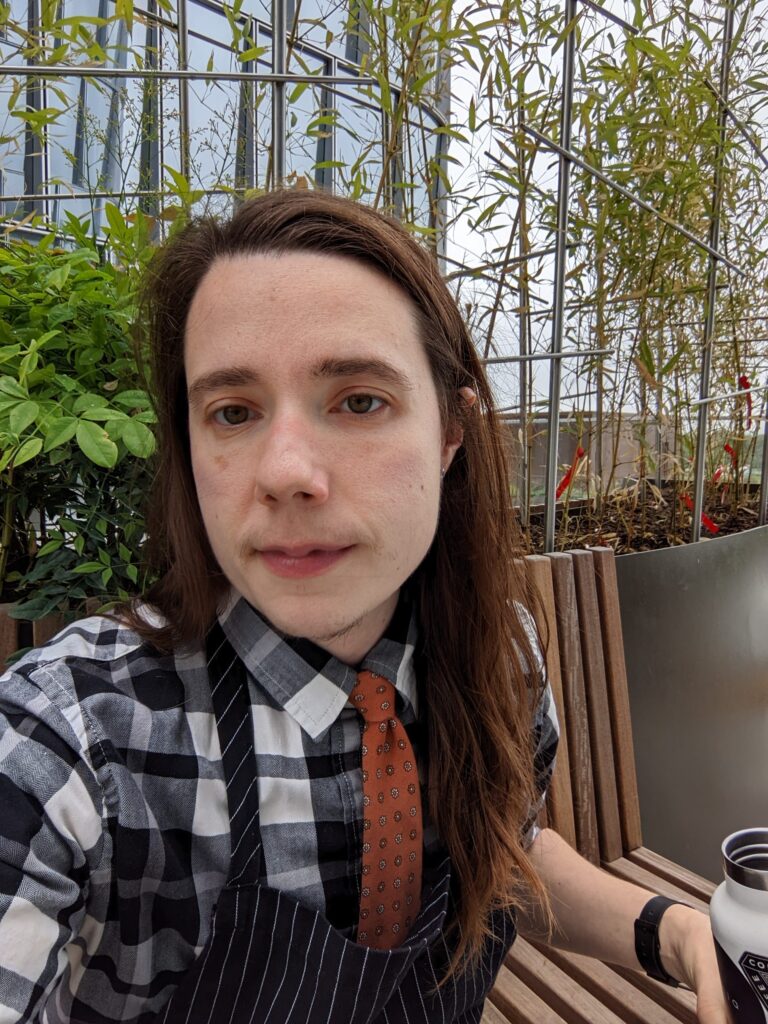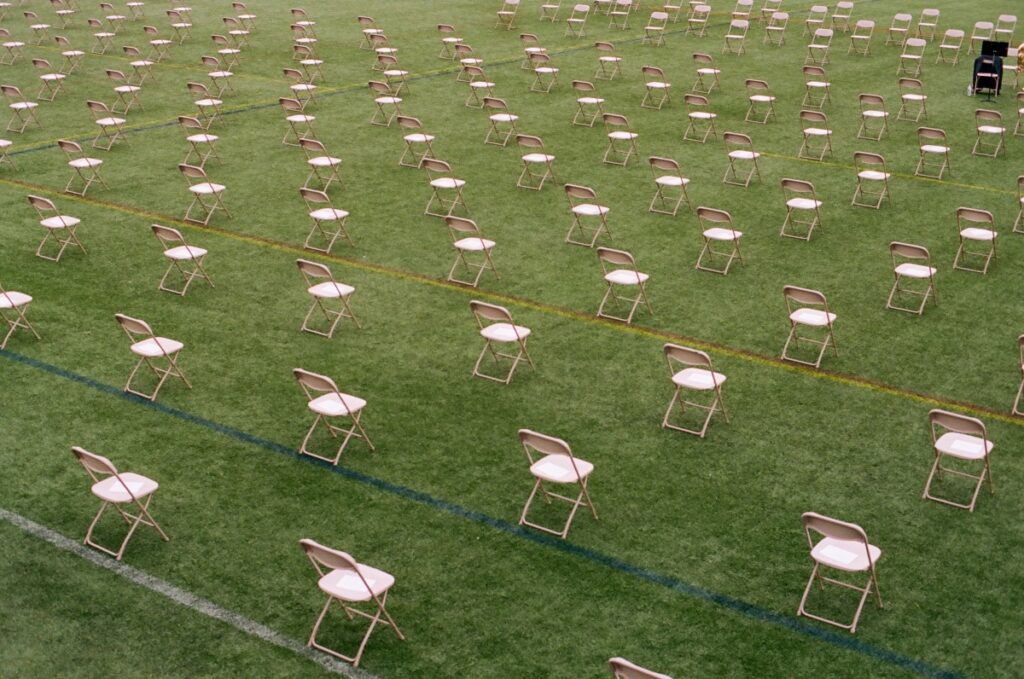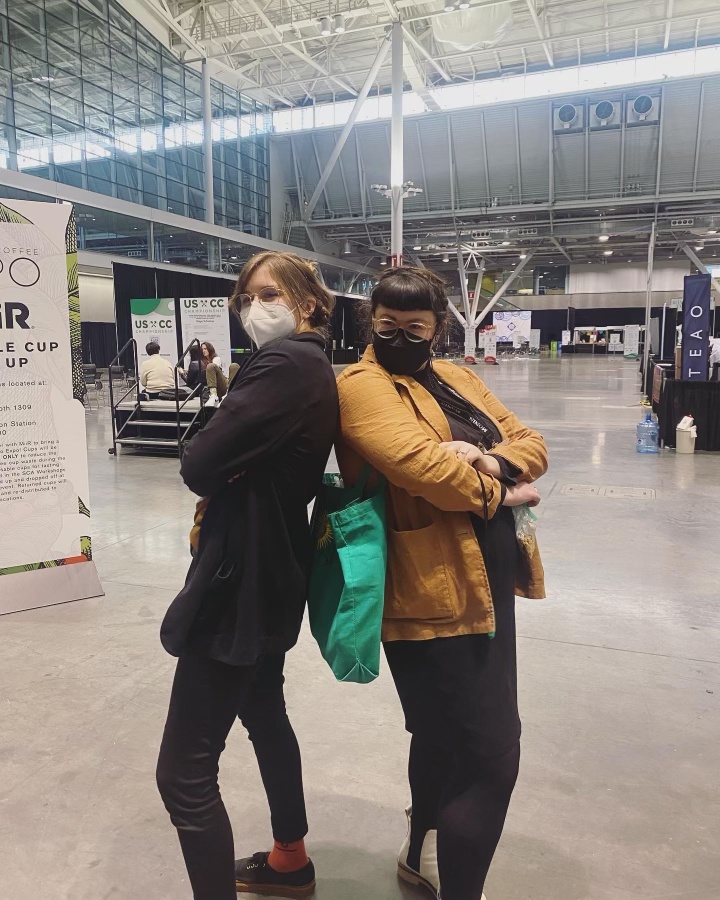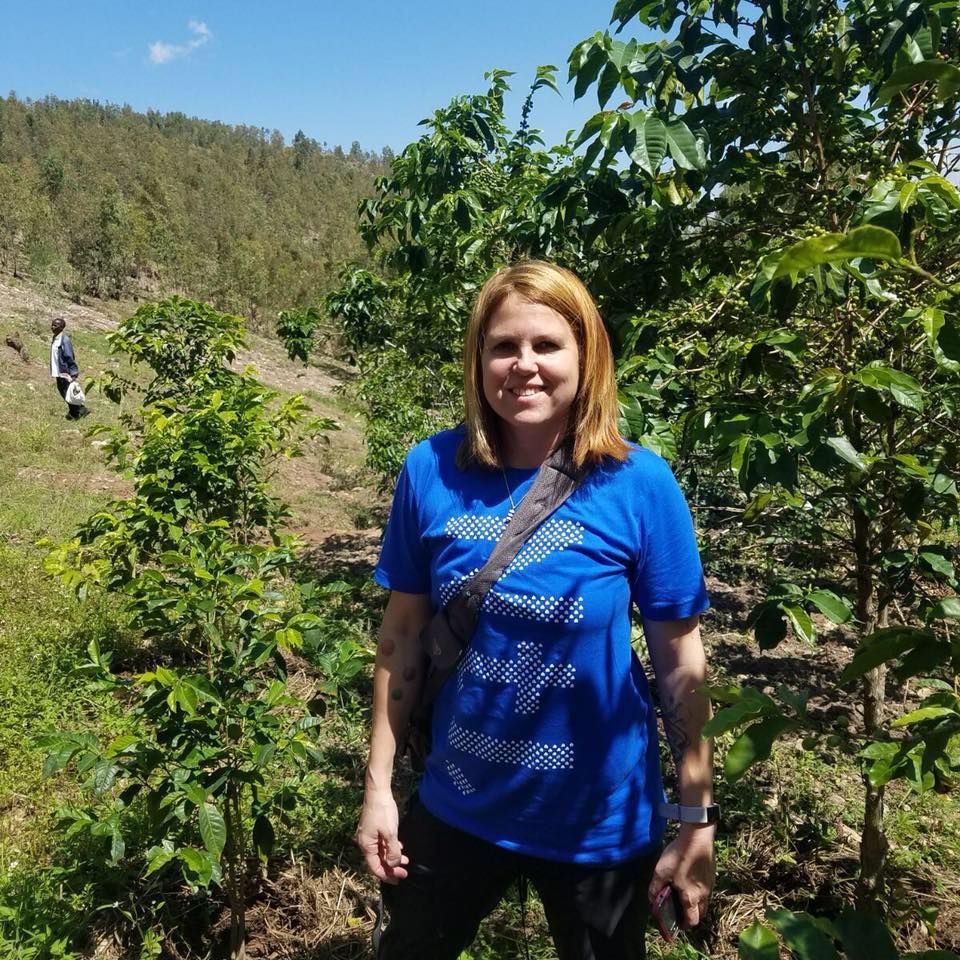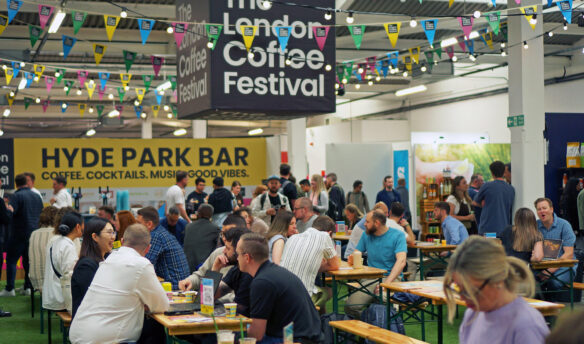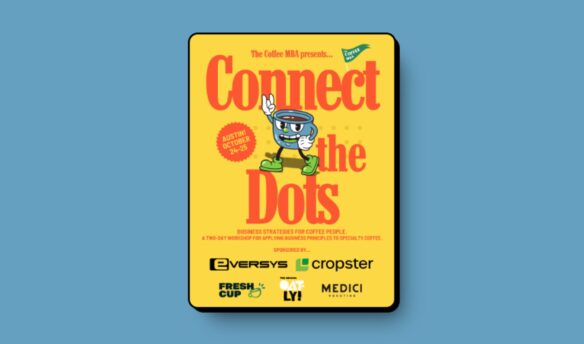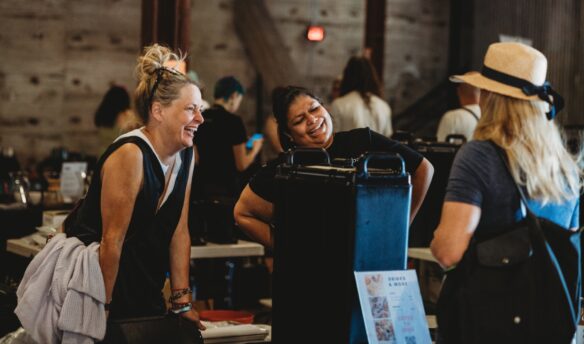My last piece looked at what happened at the April 2022 Specialty Coffee Association (SCA) Expo as a case study, including:
- What mitigations were in place.
- How they left holes.
- How enforcement gaps widened those holes, making COVID’s spread practically inevitable.
This piece unpacks what we can do differently in the future, focusing on how to strengthen mitigations using what disease scientists call the Swiss Cheese method, where each layer of protection adds a measure of prevention.
“While there are holes in slices of Swiss cheese, by combining the slices, we get a layered approach that leads to fewer holes,” the methodology states. “The same is true for COVID-19 prevention strategies.” Together, these mitigations can substantially reduce the risk of spreading COVID and make future events safer.
What We Can Do Differently
Before delving into mitigations, at this time, the only wholly safe event is a digital one. Until COVID mitigations are implemented on a larger global scale, in-person events will always come with some risk.
Some will never be able to take the risk of in-person events, so it’s important for people who’ve organized digital events in the past to continue to do so for maximal inclusion. “Unless an event is online or completely outdoors with plenty of space to distance, I just can’t go,” says Damian Salisbury, a DC-based coffee educator. He was uncomfortable attending Expo due to chronic illness and social responsibility.
But, as we’ll learn from the Swiss Cheese method, every bit of effort counts, and we can still protect vulnerable people by taking every step we can. Below is a list of mitigations, each one acting as a layer that can be implemented alongside one another to make events of any size safer for all.
There are many immediate steps we can take. We can also look to long-term solutions that can actively work to make future events safer—where more socially invasive mitigations (like masks) are less necessary because systemic ones (like air circulation and virus elimination) are more effective.
1. Communication
Whichever mitigation strategies event organizers employ at an event, communication is vital in advance, throughout, and after the fact. It’s crucial never to change rules once attendees have booked flights. For example, if you publicize that all attendees must wear masks, the rule must be enforced as diligently as possible. Make masks available at the event, ensure that leaders are modeling proper mask protocols, and create signage that is posted throughout the venue and clearly states the rules of the event.
2. Standardized Rules and Enforcement
Whatever protocols are in place, they need to be enforced universally and equitably.
Meghan-Annette Reida is a Cafe Sales Manager for Myracle Kitchen and attended Expo for work. Despite having had three vaccinations, Reida got COVID—something they knew was a distinct possibility but became more of a risk once they arrived and found the outlined mitigations were not taking place. Their advice: “If organizations are going to have safety protocols, they should enforce them. Vaccination requirement and mask? Actually enforce it. Test results? Actually check them, all of them.”
3. Masking
Masking is one prevention layer that can make a big difference, even if masks are removed to eat or drink. N95 and KN95 masks prevent outward aerosol transfer better than surgical masks, and surgical masks do more than cloth masks.
Good air circulation can make masks a lot more effective. But even with increased air circulation, it’s still helpful to have areas where masks must be worn, with no eating or drinking, so that vulnerable people can minimize exposure.
4. Air Quality
Air circulation and cleansing are critical factors in preventing COVID transmission. Event organizers should find out and communicate the number of air exchanges the convention center uses in their HVAC unit (in other words, the amount of fresh air cycling in).
We’ve known for years that outdoor events are safer than indoor ones, so if possible, include sheltered outdoor areas for attendees to take off masks to eat and drink. Looking back inside, does the convention center allow for extra HEPA filters to be brought in? Are there windows to open? The more layers, the better.
One way to monitor air quality, which can be a pretty good indicator of how likely you are to contract someone else’s COVID, is CO2 monitors. Event organizers can post CO2 monitors at regular intervals with ranges for reference (for instance, 450 parts per million is comparable to outdoor air, while 5,000 parts per million is the OSHA Permissible Exposure Limit for workers in the US).
While there’s no way to directly measure how much of the COVID virus is in the air, “carbon dioxide can, in some ways, act as a proxy,” writes Chris Mooney for the Washington Post. “People exhale it when they breathe, and the gas builds up in indoor spaces that aren’t well ventilated, reaching concentrations far above the baseline level of outside air.” CO2 monitors are relatively inexpensive and portable.
Convention centers are unlikely to incorporate any of these measures just because customers ask, but event organizers should still ask hard questions about central safety measures. There’s no way these changes will ever go into effect at a large scale if we don’t even ask for them. Meanwhile, many air quality systems are portable and can be part of event setup.
There are now UV technologies that can kill COVID in the air without harming humans. These are still relatively rare in buildings, but they could be a significant factor in indoor COVID safety in the future. UV virus elimination technologies likely fall into the category of something the convention center would have to install, or at least allow the convention hosts to install temporarily. However, since they could be one of the most effective strategies for partially unmasked events, they shouldn’t be written off.
In this instance, it’s essential to differentiate between tangible changes (like masking) and systemic changes (like asking convention centers to improve their filtration systems or keep up with new technologies). If we want to look towards a future of events that increase safety in the long term, systemic changes matter most.
5. Density Limits
Density limits matter when it comes to COVID. As defined above, COVID is an airborne disease, so the more people in a space, the likelier it is to spread.
CO2 meters are part of how we can measure density, but starting with some density limits would make conventions safer from go. Create limits on how many attendees can be in the convention center at one time: try staggering entrance times or limiting attendance of a multi-day event to just one or two days for attendees.
6. Daily Testing
For testing to be effective, it needs to happen regularly, and this might be difficult for organizers to facilitate but would do a lot to mitigate exposure. Some attendees, like Philadelphia coffee pro Kendra Sledzinski, brought enough rapid tests to test daily and share with others (Sledzinski followed masking protocols but still caught COVID at the event).
While there are limits to the efficacy of rapid tests during viral incubation periods, every case removed from circulation counts. Daily rapid testing can pick up and remove many contagious asymptomatic cases. Since rapid tests only pick up live viruses, the people testing positive on rapid tests are almost always contagious.
Another promising technology is the recently FDA-approved breathalyzer-style COVID test that can give PCR-level results in minutes. Right now, this is still outside the realm of what anyone can implement, but it does provide us with something to look forward to and is a technological advance event organizers should follow closely.
Event organizers should also outline what safe testing looks like in the aftermath of an event and encourage it. Even if you implement a variety of mitigations, have an after-event plan for attendees, enabling them to continue testing and report any positive results. At the most recent Expo, some who continued daily testing became positive on rapid tests as much as five days after the fact.
7. Contact Tracing and Communication Systems
With regular testing, large-scale event organizers should implement contact tracing and communication systems. Once a case is detected, those who’ve had contact with the infected person should be alerted. This can be done through tech (phones detect vicinity to others who test positive) or manually. Contact tracing should also apply after an event, so people don’t have to discover through social media or group chats that they’ve been exposed.
In truth, people traveling on planes or attending large conventions should also assume exposure. The sheer number of people coming from all over the world at even a moderate community transmission level means that attendees encountered the virus at some point.
8. Quarantine Guidelines
Event organizers should also put out information about quarantine guidelines. In contact tracing is done well, event organizers can estimate how long a person may need to quarantine before they can be sure they’re no longer at risk of testing positive.
Ideally, to avoid infection of non-attendees, attendees would quarantine for whatever recommended time frame after attending the event.
9. Maintaining Digital Access
It’s always been the case that not everyone can attend every event. Since 2020, the coffee industry, like others, has gotten really good at digital events, and it’s vital to continue hosting fully digital events. As Salisbury says, “we’ve seen that large-scale events can absolutely be done online and are great for people who have limited mobility, chronic pain, social anxiety, issues with overstimulation, or needs live captioning—even if the pandemic ends tomorrow.”
Cloud City Coffee owner and former SCA USA volunteer Jill Killen says that SCA made a mistake in not broadcasting the United States Barista Competitions, which showcase top-tier baristas formally presenting a variety of beverages. Usually, this event is live-streamed for coffee professionals worldwide to watch, but this year, the competition wasn’t.
“It was ableist and classist,” says Killen. “It’s also a missed opportunity to spread the magic of what happens at Expo, increase membership, inspire future competitors, and get people excited about coffee and the individual’s role in coffee. Why would you pass up marketing like that?” she asks. Seminars are also easily broadcast digitally.
Does This Only Apply to Large Conventions?
Smaller events come with their own challenges, but the same layered approach to safety should be in play if you want these events to be accessible to your local coffee friends. Assess the type of space you’ll be in and what measures can be put into place, use as many as you can, and communicate clearly about them before, during, and after the event.
Safer Events Benefit Everyone
I think it’s safe to say that no one enjoys getting sick. Before the COVID pandemic, it was routine to spread illness around the café and cupping lab, and even more so at and after large events requiring air travel.
While many want a life as similar as possible to 2019, illness and all, many are happy to take a few extra steps to avoid colds and the flu, even if they’re only inconvenient. This is especially true as scientists have learned more about post-viral events that can result from even mild illnesses, like long COVID resulting from COVID, Myalgic Encephalomyelitis/Chronic Fatigue Syndrome (ME/CFS) from influenza, and Multiple Sclerosis (MS) resulting from Epstein-Barr infection.
It’s essential to ask questions about what could make large events safer for the chronically ill. We must acknowledge that vulnerable non-attendees can be positively affected by our extra care, and through our actions, we open the door to choosing a better future.
Cover photo by Jakayla Toney for Unsplash.
RJ Joseph is a coffee writer focusing primarily on equity, workers’ rights, and structural alternatives to the status quo. She’s been a barista, a roaster, a green coffee grader and lab tech, and finally made coffee writing her full-time gig at Red Fox Coffee Merchants. In her decade in coffee, she’s also run a queer coffee events organization, written a blog on equity in coffee, and run a coffee satire website called The Knockbox. If you see her around, say hi.




